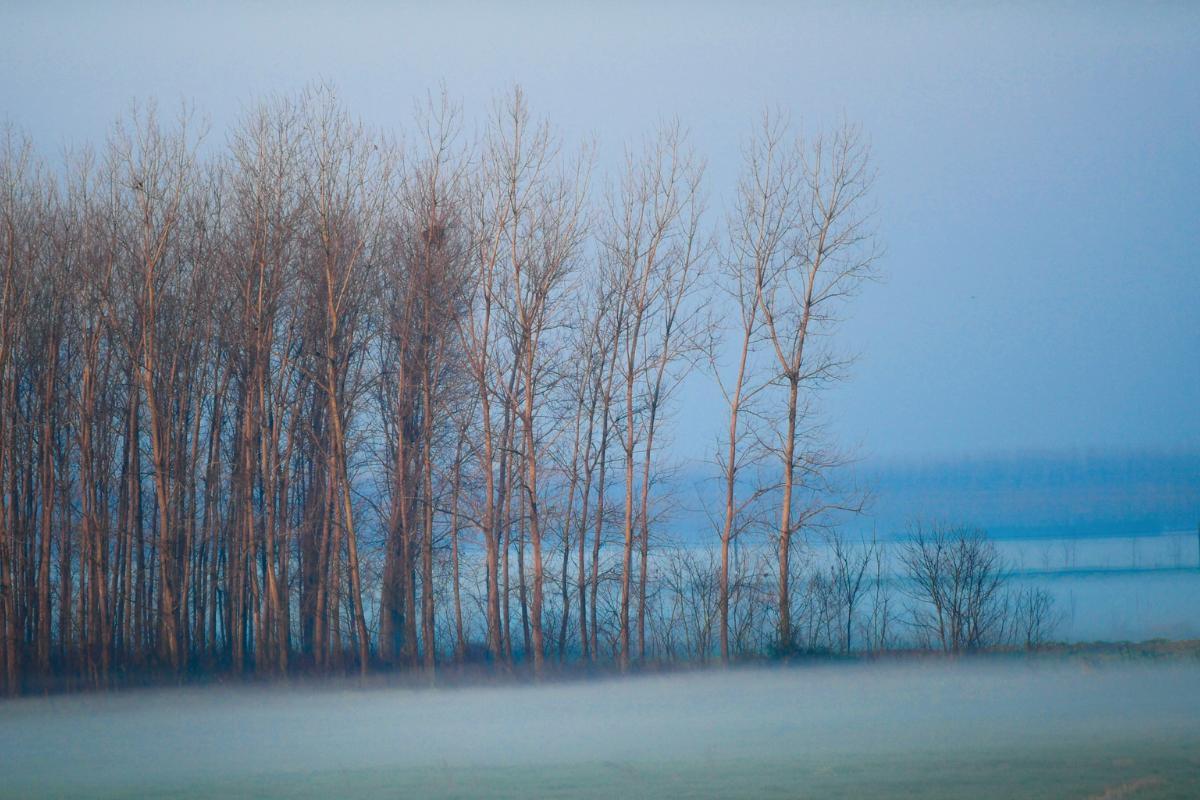What Is Advection Fog and How Does It Form?


Fog is a meteorological phenomenon that significantly impacts various human activities, from marine navigation to international infrastructure transportation. There are different types of fog, each with specific characteristics and formation mechanisms. Advection fog is defined as a fog formation that occurs when a moist air mass moves horizontally over a colder surface. This causes water vapor in the air to condense and turn into visible fog.
In this thedailyECO article, we discover what is advection fog and how is it formed? In addition to explaining advection fog formation, we will compare it to related types of fog.
What is advection fog?
Advection fog is a meteorological phenomenon that forms when a mass of relatively warm, moist air moves horizontally over a colder surface. This movement causes the condensation of water vapor in the air and the formation of small suspended water droplets. This type of fog is common in coastal areas, but can also occur in inland areas under certain conditions.
The term advection refers to the transport of a property of air by the air itself, such as temperature or humidity. One of the distinctive characteristics of advection fog is its extent and duration. Unlike other types of fog, advection fog can persist throughout the da This is in contrast to radiation fog which typically forms at night and disappears with the heat of the sun in the morning. This is because the cooling source (the cold surface) is still present, keeping the air temperature close to the dew point.
Learn more about how water droplets influence meteorological phenomena with our article explaining what are stratus clouds and how do they form?

How advection fog forms
Now we know what is advection fog, we need to better understand the atmospheric conditions which allow it to be created. We do so by looking at the process of advection fog formation:
- Advection fog begins with the presence of an air mass containing a high concentration of water vapor. This air mass can originate in warm and humid areas, such as oceans, seas or large bodies of water. Evaporation is significant in these geographical areas. For example, warm, moist air from the ocean moves toward land in coastal areas.
- Light and constant winds play a fundamental role in this process, as they transport humid air horizontally from its source to colder areas. This horizontal movement is essential for the air to come into contact with a surface that has a significantly lower temperature.
- When moist air moves over a cold surface such as a colder body of water or cooled land, the temperature of the air begins to drop. This cooling is critical for any type of fog formation. In coastal regions, this often occurs when warm, moist ocean air moves over cooler coastal waters or land cooled at night.
- As moist air cools upon contact with the cold surface, its temperature can drop to the dew point. This point is the temperature at which the air cools and the water vapor it contains begins to condense in the form of small water droplets. When this occurs, the relative humidity of the air reaches 100% and the excess water vapor turns into fog. Learn about a similar type of water formation with our article on what is dew and how is it formed?
- Once the air temperature reaches the dew point, water vapor begins to condense into tiny suspended water droplets. These water droplets are what form advection fog. The condensation process is continuous as long as cooling conditions are maintained, which can result in a dense, widespread layer of fog.
Advection fog can be persistent due to the constant influence of the cold surface that keeps the air temperature low. Unlike radiation fog which typically dissipates with the sun's heat, advection fog can last all day. This is because the cooling source does not easily disappear.
Ideal conditions for the formation of advection fog includes a significant temperature difference between the surface and the air. It also requires high humidity and light winds that facilitate the movement of air without rapidly dispersing it. For example, it is common to see advection fog on coasts during spring and summer, when warm, moist ocean air meets the colder surface of the water.
Learn more about these geographic areas which commonly have advection fog with our article on what are coastlines in geography?

Differences between advection and radiation fog
Although they are often confused with each other, advection fog and radiation fog are two different types of fog that form under different meteorological conditions and physical processes. We explain the differences between radiation and advection fog here:
Formation
Advection fog forms when a relatively warm, moist air mass moves horizontally over a colder surface. This horizontal movement is what is known as advection. It causes the temperature of the air to drop until it reaches its dew point, which causes condensation of water vapor in the air. This type of fog is common in coastal areas, especially when warm, moist ocean air moves over colder waters or cooled land.
Comparatively, radiation fog forms as a result of the ground cooling at night. This type of fog occurs in conditions of clear skies and light winds, allowing the Earth's surface to lose heat through radiation. As the ground cools, it also cools the air in direct contact with it. If the air temperature drops to the dew point, water vapor condenses into small droplets, forming fog. Radiation fog is typically a nighttime or early morning phenomenon and usually dissipates with the sun's heat during the morning as the surface warms again.
Extension and thickness
Another important difference lies in the extent and thickness of the fog. Advection fog tends to be more extensive and thick, being able to cover larger geographic areas due to the continuous movement of moist air over the cold surface. Conversely, radiation fog tends to be more localized. It mainly affects low-lying areas and valleys where nighttime cooling is more pronounced.
Duration
In terms of duration, advection fog can persist for long periods as long as cooling conditions remain constant. This can result in dense, continuous fog that affects visibility and human activities for an extended period of time. Radiation fog tends to dissipate quickly with the arrival of the sun, which heats the surface and raises the air temperature, thus reducing condensation.
After learning all this about what is advection fog and its formation, you may want to know why it is confused with similar meteorological phenomena. You can do so with our article on the difference between mist, fog and haze.
If you want to read similar articles to What Is Advection Fog and How Does It Form?, we recommend you visit our Meteorological phenomena category.







